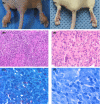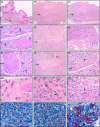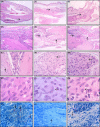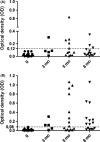Murine experimental leprosy: Evaluation of immune response by analysis of peritoneal lavage cells and footpad histopathology
- PMID: 31124597
- PMCID: PMC6658912
- DOI: 10.1111/iep.12319
Murine experimental leprosy: Evaluation of immune response by analysis of peritoneal lavage cells and footpad histopathology
Abstract
This study evaluated the immune response of nude and BALB/c mice inoculated in the footpads (FP) with Mycobacterium leprae after 3, 5 and 8 months. At each timepoint peritoneal cells, peripheral blood, FP and popliteal lymph nodes (PLN) were collected. Peritoneal cell cultures were performed to measure the H2 O2 , O2- , NO, IL-2, IL-4, IL-10, IL-12, IFN-γ and TNF levels. Serum levels of anti-PGL-I antibodies were also quantified. The results showed that the infection was progressive in nude mice with bacterial multiplication, development of macroscopic lesions in the FP and presence of bacilli in the PLN at 8 months. In BALB/c mice, the infection reached a plateau of bacillary multiplication at 5 months and regressed at 8 months. Histopathological analysis of FP revealed a mononuclear inflammatory infiltrate with a large number of neutrophils at 5 months, with a higher number in nude mice. At 8 months, the number of neutrophils decreased and the infiltrate was predominantly mononuclear in both mouse strains. There was no H2 O2, O2- , IL-2, IL-4, IL-10 and IFN-γ production in the course of infection in nude mice; however, in BALB/c, O2- and IL-12 production was higher at 5 months and NO, IFN-γ and TNF production was higher at 8 months when there was a decrease in the number of bacilli. The level of anti-PGL-I antibodies was higher in BALB/c mice. Thus, nude and BALB/c mice can be used as experimental models for the study of various aspects of leprosy.
Keywords: cytokines; histopathology; immune response; leprosy; mice; peritoneal lavage.
© 2019 The Authors. International Journal of Experimental Pathology © 2019 International Journal of Experimental Pathology.
Conflict of interest statement
The authors report no conflicts of interest.
Figures





References
MeSH terms
Substances
LinkOut - more resources
Full Text Sources
Medical

